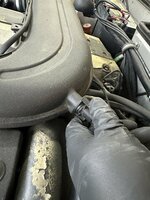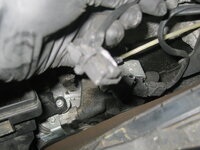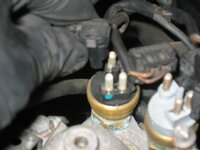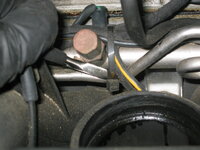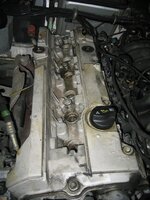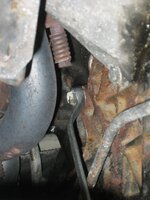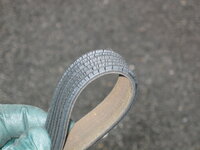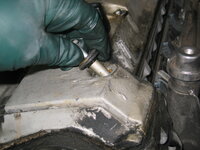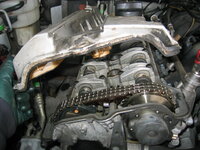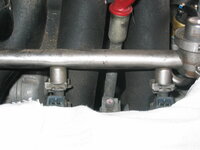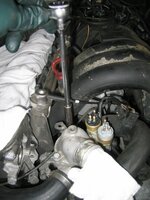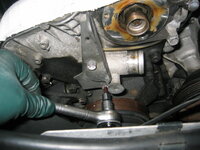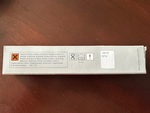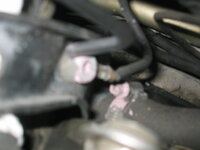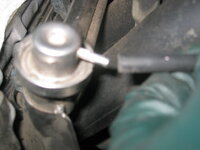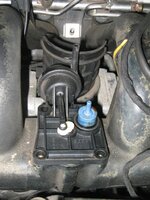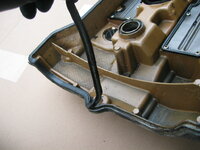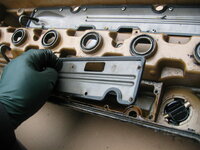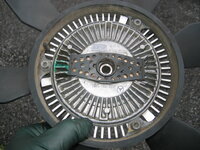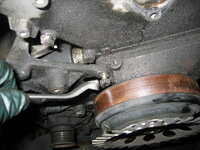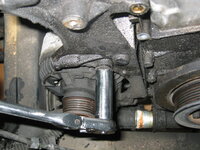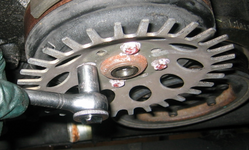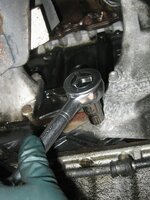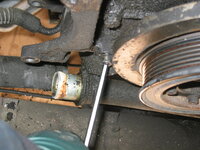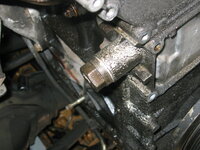I recently noticed that my 1995 G320 (M104.996 engine variant) was losing major coolant -- as in the expansion tank was going half-way down every time I drove the truck. Further investigation showed a major "drip-drip-drip" coolant leak at the back of the engine. Final investigation today is showing that there is a major coolant leak at the rear right corner of the head gasket. This is a common occurrence with the M104 engine, starting around 110-120K miles. The truck has around 133K on it.
So, this is going to necessitate the removal of the cylinder head, and essentially will lead to a total top-end refurbishment of the M104 in the truck. The last time I did this operation was in November, 2013 through January, 2014 on my ex-wife's 1995 E320 wagon, taking my time working in the garage. This operation was thoroughly documented here on the forum, in this thread.
This type of situation is EXACTLY why I opted to buy this G-wagen 10 years ago -- because of my familiarity with the M104 engine, and the fact that I had already done this one time and documented it both photographically, and in my hand-written notebook, step by step. Of course, things will be slightly different with the G-wagen, in terms of having a different setting in the vehicle (larger engine bay, no lower encapsulation and firewall panels, and so forth). I won't have to jack up the G-wagen to work UNDER the engine, because it is already high enough off the ground where I can easily get underneath it. The G-wagen's hood folds backward to rest on top of the windshield, so it will be completely out of the way.
A cursory check of key parts availability is showing pretty much all of the major parts I will need for refurbishment, to be available. This is going to be a comprehensive refirb, and will include not only the cylinder head being done, but the timing chain and tensioner being replaced, of course the front timing cover (which has been leaking for years) being replaced, cam adjuster solenoid being replaced, and much much more.
I haven't taken on a "big" job like this since my 2020 COVID engine bay refresh on my E500, so I am looking forward to digging into the job. I shall be commencing it this coming week. I will keep everyone informed along the way, photographically and descriptively in this thread. Because the G-wagen's variant of the M104 (the M104.996, as opposed to the E320's M104.992) is so similar to the W124's version, about 98-99% of everything will apply in terms of the mechanical work and dis/re-assembly of the engine. I have all of the needed special tools left over from my previous M104 job, and even some spare parts left over!! The previous E320 job took a bit over 60 hours, taking my time. I am expecting this one to likely take even more time, as I am planning to do a lot of "engine bay" refresh stuff as well.
So, stay tuned, as another big project saga is soon to commence!
Cheers,
Gerry
So, this is going to necessitate the removal of the cylinder head, and essentially will lead to a total top-end refurbishment of the M104 in the truck. The last time I did this operation was in November, 2013 through January, 2014 on my ex-wife's 1995 E320 wagon, taking my time working in the garage. This operation was thoroughly documented here on the forum, in this thread.
This type of situation is EXACTLY why I opted to buy this G-wagen 10 years ago -- because of my familiarity with the M104 engine, and the fact that I had already done this one time and documented it both photographically, and in my hand-written notebook, step by step. Of course, things will be slightly different with the G-wagen, in terms of having a different setting in the vehicle (larger engine bay, no lower encapsulation and firewall panels, and so forth). I won't have to jack up the G-wagen to work UNDER the engine, because it is already high enough off the ground where I can easily get underneath it. The G-wagen's hood folds backward to rest on top of the windshield, so it will be completely out of the way.
A cursory check of key parts availability is showing pretty much all of the major parts I will need for refurbishment, to be available. This is going to be a comprehensive refirb, and will include not only the cylinder head being done, but the timing chain and tensioner being replaced, of course the front timing cover (which has been leaking for years) being replaced, cam adjuster solenoid being replaced, and much much more.
I haven't taken on a "big" job like this since my 2020 COVID engine bay refresh on my E500, so I am looking forward to digging into the job. I shall be commencing it this coming week. I will keep everyone informed along the way, photographically and descriptively in this thread. Because the G-wagen's variant of the M104 (the M104.996, as opposed to the E320's M104.992) is so similar to the W124's version, about 98-99% of everything will apply in terms of the mechanical work and dis/re-assembly of the engine. I have all of the needed special tools left over from my previous M104 job, and even some spare parts left over!! The previous E320 job took a bit over 60 hours, taking my time. I am expecting this one to likely take even more time, as I am planning to do a lot of "engine bay" refresh stuff as well.
So, stay tuned, as another big project saga is soon to commence!
Cheers,
Gerry

























